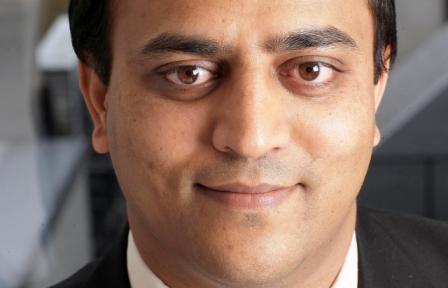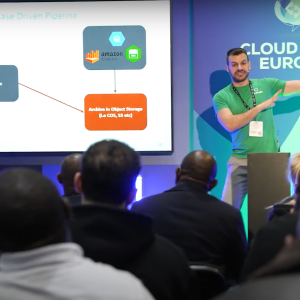
"When it comes to digital, I think the basic question is: how is technology going to impact your value proposition to the market?"
"How is it that digital is changing the value chain? How will you engineer your proposition, be it a new product or a new set of capabilities which are disruptive to the market in which you operate. If you don’t, someone is going to come and disrupt you using the same set of technologies. "
Ashish Kumar Gupta, Head of EMEA HCL Technologies was speaking to CBRonline in a London hotel over breakfast. Mr Kumar Gupta is direct in his assessment of the digital disruption to be faced by all businesses.
"Internal IT is essentially being tasked with creating customer facing products. So it needs to embed the same principals which product companies have had for many years. That is making the products, delivering the products, managing the products," he says.
This disruption will become embedded in the next three, five and seven years. There is only one direction of travel.
Disruption through convergence
What’s driving this is the convergence of IT capacity through the commoditisation of data centre availability and cloud services, the surge in IOT and smart devices which will generate vast data pools and low cost communications.
As a service provider which positions itself as having come from breaking the mould of traditional outsourcing contracts Mr Kumar Gupta sees opportunity not in deploying infrastructure but in building platforms and partner ecosystems to deliver outcomes.
Moving HCL beyond traditional outsourcing the company, he says, will not play in areas without what it calls ‘a long term capability.’
He cites data centres – which HCL doesn’t own and has no interest in owning.
"We were always very comfortable that the data centre capacity would be available in the marketplace – and similarly when we look at platforms, commodity cloud capacity will be available from massively large organisations. Even the large traditional computer manufacturers find it very tough to compete with and do so already. So the Amazons, Azures, and the Googles of the world replaces most of this [infrastructure]."
"One of the aims we have in the next five years is to be, a top three partner for the leading SAAS, PAAS, IAAS providers," he says.
This, he says doesn’t mean forcing customers onto particular platforms but identifying the best platform for the problem.
IOT
For HCL IOT is an engineering stack problem to be solved to create new services and value. Starting from the sensor in the device (now SNMP enabled), to the data being produced (in vast volumes), transferred to and across the cloud (PAAS, IAAS) on top of which is the application layer to expose value from a visibility point of view to be fed back to the business.
Customers will now be given a value proposition of services of a totally different kind, be it monitoring, break fix or buying products as a service.
"The first thing to do to make this dumb device intelligent is to SNMP enable it. And when you start enabling these devices, the amount of data these things throw – say a transformer in a sub-station throws about a TB of data in a day, and a substation has 100 transformers – it is a massive engineering problem to solve the stack."
"In the cloud, Openstack enables us to create platforms, to create the stack which essentially allows businesses to have strong digital stance from an IOT operational perspective. Once you created that and can transfer the data to any cloud maybe through a
PAAS service or an IAAS service."
"Once there, all your applications and the SMAC layer you can bolt on top where you can create the platforms and take the data, expose the data and analyse the data. Suddenly IT which has been running environments for internal users is now facing outwards and the scalability is from zero to X."
The moment you create a product for an external user and his customer experience needs – his exposure is not limited to what he sees in your industry he is going to compare it to his experience with an Uber or with a Facebook, so his experience dimension is totally different – this is something most IT and most IT firms are not great at."
Scale
"HCL’s proposition is that we’re the company that will help you disrupt your existing delivery model."
"Using our capabilities and infrastructure we can help you create the models and capabilities for you to start disrupting either your digital value chain or your machine to machine value chain which is IOT."
Scalability then comes into play because IT goes from one million touch points to 100 or 150 million.
Once built, it is going to be highly complex because it is going to be connected.
No more silos
The shake-up of traditional IT from its infrastructure silos of storage, network and server is underway thanks to so many cloud propositions coming into play making it more agile and more service oriented.
Mr Kumar Gupta says HCL is involved with large media and publishing organisations where the migration to public cloud is for enterprise workloads, not just web workloads but the core business workloads.
"We’re actively involved in helping customers identify their enterprise workload which we can disintermediate to the cloud. We are migrating large customers to Amazon or Azure public cloud type environments."
One key area of management is orchestration for single control and access, security and managing sprawl on public cloud and averting costly idle capacity.
So a lot of these challenges are what we’re helping customers with. If you have 13PB of data and need legacy back up, environments can become constraints.
"We have a strong point of view on the different platforms for maturity and suitability for enterprise usage. Do we have an alignment with one cloud platform? The answer is no," he says. "It is down to customer desires and if we feel it is not right for the requirement we don’t mind sharing that opinion with the customer."






